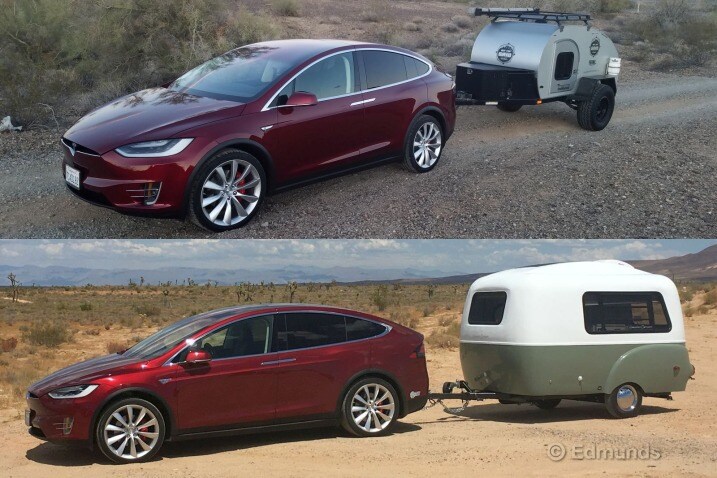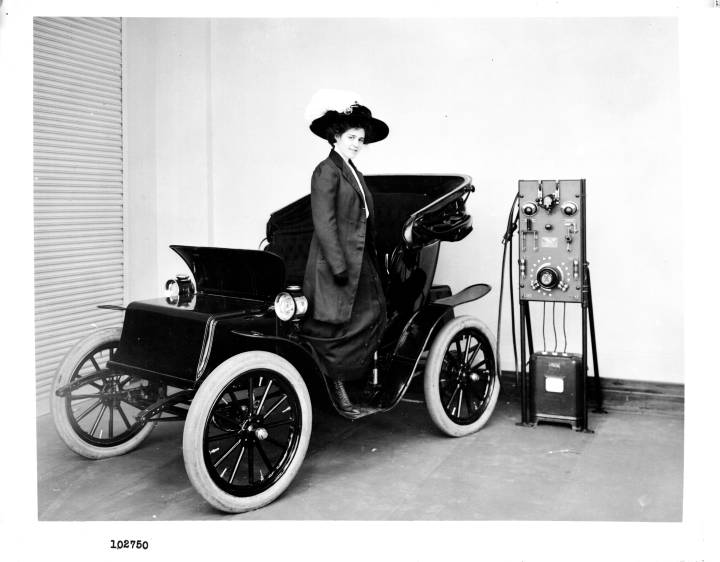ncbill
Thinks s/he gets paid by the post
On a crash landing this thing looks like it would puree the pilot.
"Will it blend?"
On a crash landing this thing looks like it would puree the pilot.
While weight is an issue in ground based vehicles (cars, trucks, trains, etc.) it's much more important in aircraft as a HUGE amount of the energy involved in flying is 1) Lifting an aircraft initially to its most efficient altitude and 2) simply holding the aircraft up at all times. In ground based vehicles, weight is a small factor in additional rolling resistance and a bit bigger factor in acceleration...

... But remember it wasn't so long ago that electric cars, even without being augmented with advanced autonomous capabilities, was a pipe dream. ....
Early designs: 1899-1917
1899: Carmaker Pieper of Belgium introduced a vehicle with an under-seat electric motor and a gasoline engine.[10] It used the internal combustion engine to charge its batteries at cruise speed and used both motors to accelerate or climb a hill. Auto-Mixte, also of Belgium, built vehicles from 1906 to 1912 under the Pieper patents.[11]
1900: Ferdinand Porsche, then a young engineer at Jacob Lohner & Co. creates the first gasoline-electric hybrid vehicles.[12]
1901: Jacob Lohner & Co. produces the first Lohner Porsche, a series of gasoline-electric hybrid vehicles based on employee Ferdinand Porsche's novel drivetrain.[12] These vehicles had a driveline that was either gas or electric, but not both at the same time.
1905 or sooner: Fischer Motor Vehicle Co., Hoboken, NJ produces and sells a petrol-electric omnibus in the United States and in London, including battery storage.[13]
1907: AL (French car)
1917: Woods Dual Power Car had a driveline similar to the current GMC/Chevrolet Silverado hybrid pickup truck.

... In rotary aircraft (helicopters) I think I've heard that as much as 75% of the fuel is used JUST to keep the aircraft at altitude. In conventional aircraft, I'm sure the proportion needed to keep the aircraft aloft is considerably smaller but still WAY more important than weight is in a car/truck/bus, etc...
Why do it by air? Or old fashioned rail?
Have we forgotten the Hyperloop?
Yes, electric cars were around in the early 1900s. Here's a photo of a charging station, back in 1910.

It is the lithium battery that brought back the EV, this time with enough energy storage to go a few hundred miles to allow competition with the ICE car. However, as discussed in the Electric Car thread, the EV still trails the ICE car badly for some applications. Another factor of 2x or 3x in battery improvements is needed.
When it comes to airborne applications, the electric plane is at the same stage as the EV back in 1910: barely useable for short distance commute, and that's it.
A huge improvement is needed before we can see the electric plane used for commercial air transport.
As the video in the OP noted, the energy needed by a 737 has to be stored in a battery currently weighing 1.2 million pounds.
Are you suggesting that such improvement IS possible such as to make electrical aircraft possible in the future? I ask this, not to be impertinent. I would simply suggest it IS possible to calculate RIGHT NOW (I can't do it - that's not my area of expertise) if it will EVER be possible to create a battery to power an aircraft on a practical basis...
No, don't get me wrong.
I don't see how it is possible to replace current jetliners with electric planes that can cross the ocean on a single charge, using what we know right now.
But I cannot say what we can or cannot do, simply because I don't know enough about battery chemistry to know the theoretical limit.
Let's say, if in the far future, we cannot find a battery that allows a non-stop flight from LA to London, what we can do easily today, but we can at least do NYC to London, that itself is useful. It will take longer to get there, but when fossil fuel runs out, to be able to get there at all is enough to make one grateful.
So, can we do NY to London with an electric plane? No way with what we know about current battery technology. Maybe in 100 years? I will not live long enough to find out.
In other words, I will not say never, but it's extremely unlikely in one's lifetime.
anyone ever use a dropping mercury electrode polarograph - well never mind.
Not to put too fine a point on it, but I return to MY main point. I think it would be valuable for "someone" to do that "possible/impossible" in the next 100 years calculation NOW. The chemistry will not change in 100 years. Maybe the weight of the aircraft can change in that time frame, but the POSSIBLE battery chemistry (true battery - charge in - charge out, not "consumables" like H2) will not change.
Suggesting there could be a real "breakthrough" in battery technology is like saying after using petroleum for 100 years in aircraft engines, there will be a breakthrough in liquid fuels and we'll find one that can double the miles flown per pound of fuel. ... .
So when all we had were NiCd batteries, possible battery chemistry was what it was. Then NiMH came along, and it was roughly twice as good as NiCd. Then Li-ion came along, and it was roughly three times as good. Each time, more things became possible. The bleeding edge battery tech (not consumer stuff) is better yet. It was incremental then, it will be incremental going forward. I see no justification that supports a claim that humanity has found all possible energy storage methodologies. Breakthroughs are still possible. But nobody will every need more than 640K, that's for sure.
I have no doubt that I know less about this than most here, but I can't shake the thought that we don't know what we don't know.
Critics of early steam locomotives thought that humans were not designed to go at 50 mph, and that it would be impossible to survive such speeds.
Thinking about how we went from the advent of heavier-than-air powered flight to walking on the moon in less than 66 years lets me stay optimistic.
...Suggesting there could be a real "breakthrough" in battery technology is like saying after using petroleum for 100 years in aircraft engines, there will be a breakthrough in liquid fuels and we'll find one that can double the miles flown per pound of fuel.
^ Anyone else getting virus warnings from this link?
Here's quick Wiki link for the A330 - pretty typical long haul aircraft - https://en.wikipedia.org/wiki/Airbus_A330
Max Take Off Weight is shown at: 533,000 pounds with about 240,000 pounds of fuel.
Think about batteries ....
So, airships, anyone? MIGHT work since solar arrays could be made to be conformal enough to keep batteries powered.
